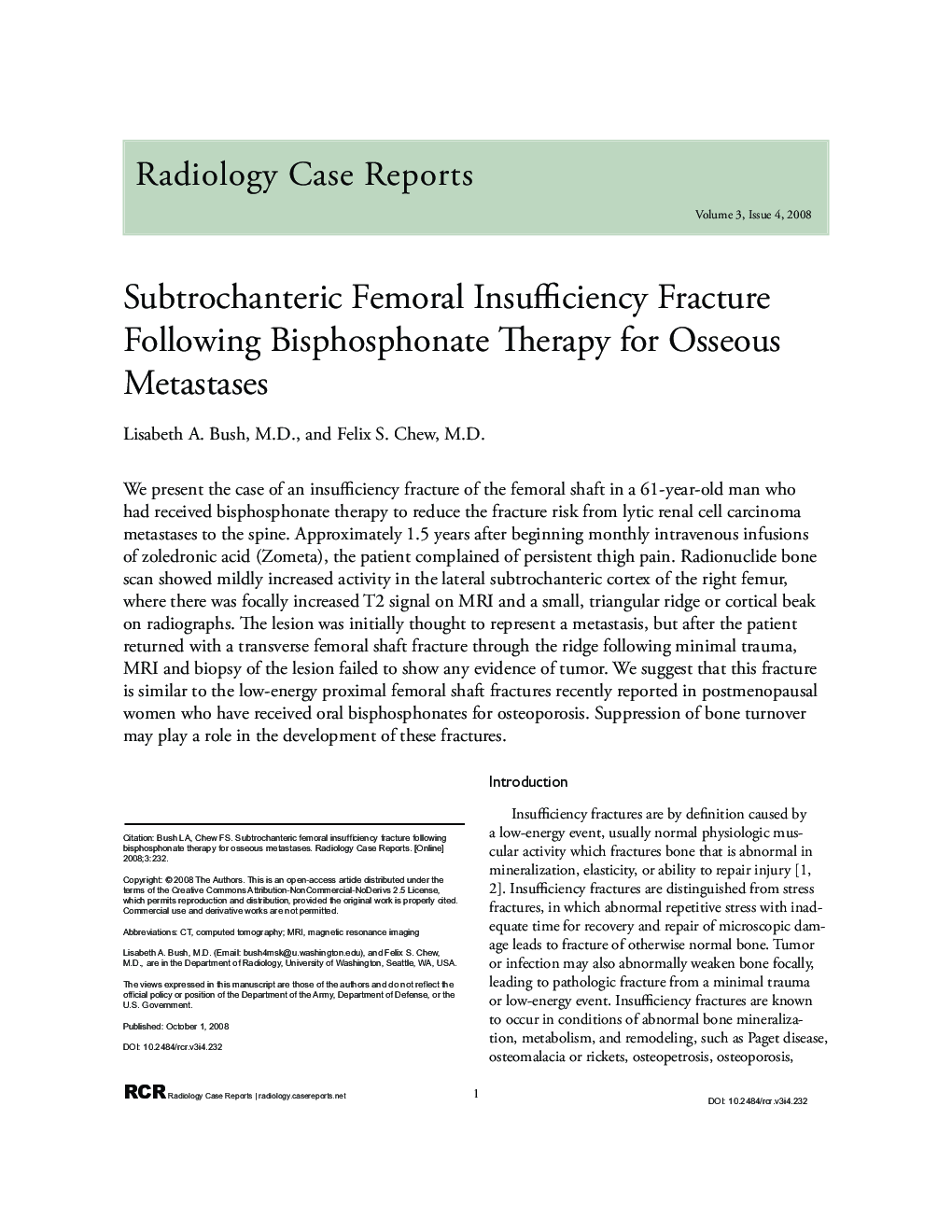| Article ID | Journal | Published Year | Pages | File Type |
|---|---|---|---|---|
| 4248302 | Radiology Case Reports | 2008 | 6 Pages |
Abstract
We present the case of an insufficiency fracture of the femoral shaft in a 61-year-old man who had received bisphosphonate therapy to reduce the fracture risk from lytic renal cell carcinoma metastases to the spine. Approximately 1.5 years after beginning monthly intravenous infusions of zoledronic acid (Zometa), the patient complained of persistent thigh pain. Radionuclide bone scan showed mildly increased activity in the lateral subtrochanteric cortex of the right femur, where there was focally increased T2 signal on MRI and a small, triangular ridge or cortical beak on radiographs. The lesion was initially thought to represent a metastasis, but after the patient returned with a transverse femoral shaft fracture through the ridge following minimal trauma, MRI and biopsy of the lesion failed to show any evidence of tumor. We suggest that this fracture is similar to the low-energy proximal femoral shaft fractures recently reported in postmenopausal women who have received oral bisphosphonates for osteoporosis. Suppression of bone turnover may play a role in the development of these fractures.
Related Topics
Health Sciences
Medicine and Dentistry
Radiology and Imaging
Authors
Lisabeth A. M.D., Felix S. M.D.,
